#*my s2 thoughts
Text

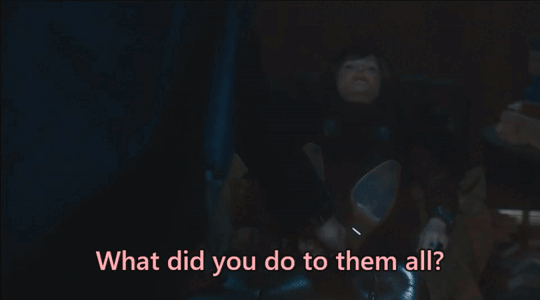




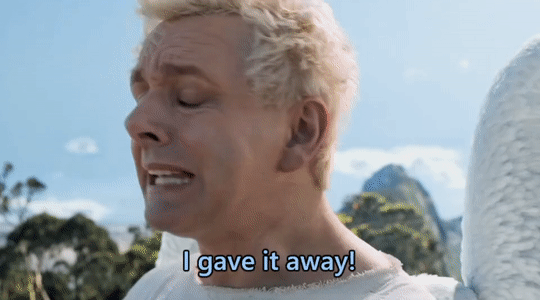
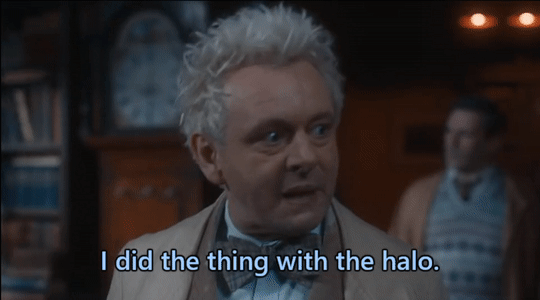
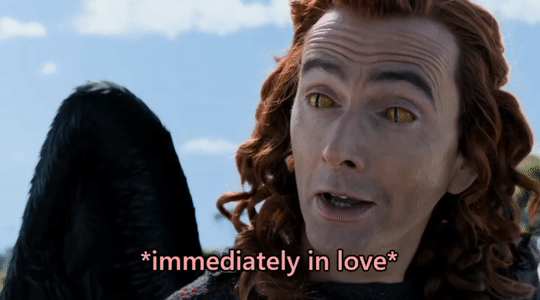

Good Omens S1E1 | S2E6
#has this been done before? idk i thought of it on my own either way#good omens#good omens 2#good omens s2#gos2#crowley#good omens crowley#anthony j crowley#aziraphale#good omens aziraphale#ineffable husbands#aziracrow#good omens gifs#good omens gifset
35K notes
·
View notes
Text
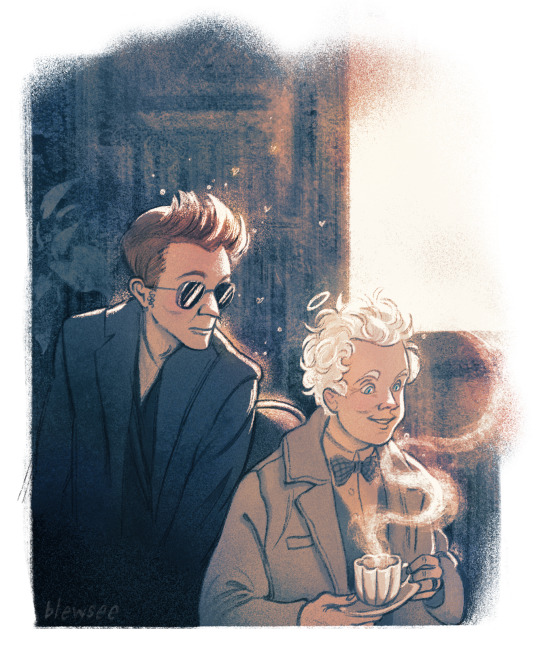
they make me so sick in the head it’s actually unreal
#photo insp from that one photo in the cnn article on s2!#i flipped the image bc i wanted to draw crowleys little snake tattoo#idk i thought it was cute#anyways. that new season huh?#crying. screaming. throwing up. kicking the shit out of my pillow.#i love being overly invested in my gay little tv shows#go2#good omens fanart#good omens#good omens season 2#crowley good omens#aziraphale#aziraphale x crowley#ineffable husbands#fanart
6K notes
·
View notes
Text
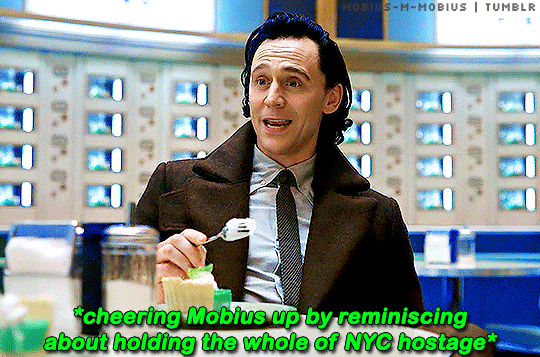

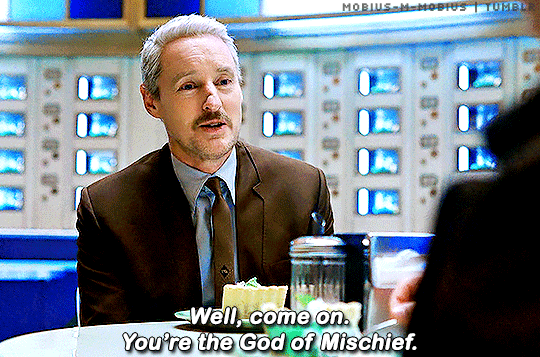

Sometimes our emotions get the better of us. You can say that again.
#mobius#loki#lokius#mcuedit#lokiedit#marveledit#loki spoilers#cafeteria scenes my beloved 🥺💖#another day waking up reeling at the thought of meeting a person unconditionally accepting of your entire past present and future#and becoming someone who seeks growth from wanting to offer that back to build an equal partnership for the first time!#the way mobius openly likes and accepts all the things about loki everyone else tried to hide or push down oh i'm so emo ;;;;;#maybe i'm overdoing my emoji use while giffing them this season BUT they haven't looked at each other with anything except heart eyes so#take it up with them and their choices 😂#owen wilson#tom hiddleston#loki s2 spoilers#marvel#owenwilsonedit#dianagifs
5K notes
·
View notes
Photo

your worst nightmares
#keep brainrotting abt hunter and luz. GAHHHH sillies#the owl house#toh spoilers#hunter toh#luz noceda#hunter noceda#toh#watching and dreaming#toh s3#toh art#my art#fanart#hunter#luz#toh hunter#wad#wad spoilers#the owl house season 3#hunter fearing he's going to become like belos in ttt. luz thinking she IS as bad as belos because of all of her guilt and self-blame now...#luz dressed up as belos. the hunter in luz's dream being dressed in his s2 pre-hollow mind outfit....... thoughts#that scene with hunter on the floor in luz's nightmare.... that whole setup in GENERAL.. i know that shit'll be devastating#(i feel like the hunter in luz's dream is not ACTUALLY hunter like maybe the hexsquad is MOSTLY just luz's pigmant of imagination or sth)#(and the real hunter is either having his own dream or y'know. just vibing doing sth in real life)#(but if the dream!hunter thinks luz rly IS belos. if the whole HEXSQUAD thinks she's him... despite her trying to tell them she's not.. agh)#begging for them to have one good day cuz MANXJJSK#need a comeback of their first talk in thanks to them but this time it's truly them comforting each other#reassuring each other. knowing that NONE of them are similar to belos in any way#gah#also thinking of that flapjack-shaped rock in the background and how if it's luz's nightmare then it might be a manifestation of her guilt#which means that she also somewhat blames herself for flapjack's death. man i can't do this
16K notes
·
View notes
Text



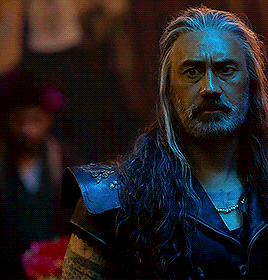




something something Ed not being able to step in to protect Stede from physical and emotional harm out of fear of damaging Stede's reputation and instead letting it play out as he silently falls apart in the background
#our flag means death#ofmd#ofmdedit#ofmd s2 spoilers#edward teach#blackbeard#blackbonnet#gentlebeard#taika waititi#there's an excellent meta on this in my head but unfortunately i don't know how to write#if anyone understands what i mean here please put my thoughts to words#my stuff
3K notes
·
View notes
Text



... Oh. You made it all yourself?
#good omens#ineffable husbands#goodomensedit#good omens s2#good omens season 2#gomens#aziraphale#crowley#david tennant#michael sheen#my gifs#aziraphale really thought he called him gorgeous 🥺#ok i feel like i giffed all i wanted see you all on thursday when we'll be giffing heartstopper
6K notes
·
View notes
Text
So I accidentally almost got into an argument on Twitter, and now I'm thinking about bad historical costuming tropes. Specifically, Action Hero Leather Pants.
See, I was light-heartedly pointing out the inaccuracies of the costumes in Black Sails, and someone came out of the woodwork to defend the show. The misunderstanding was that they thought I was dismissing the show just for its costumes, which I wasn't - I was simply pointing out that it can't entirely care about material history (meaning specifically physical objects/culture) if it treats its clothes like that.
But this person was slightly offended on behalf of their show - especially, quote, "And from a fan of OFMD, no less!" Which got me thinking - it's true! I can abide a lot more historical costuming inaccuracy from Our Flag than I can Black Sails or Vikings. And I don't think it's just because one has my blorbos in it. But really, when it comes down to it...
What is the difference between this and this?
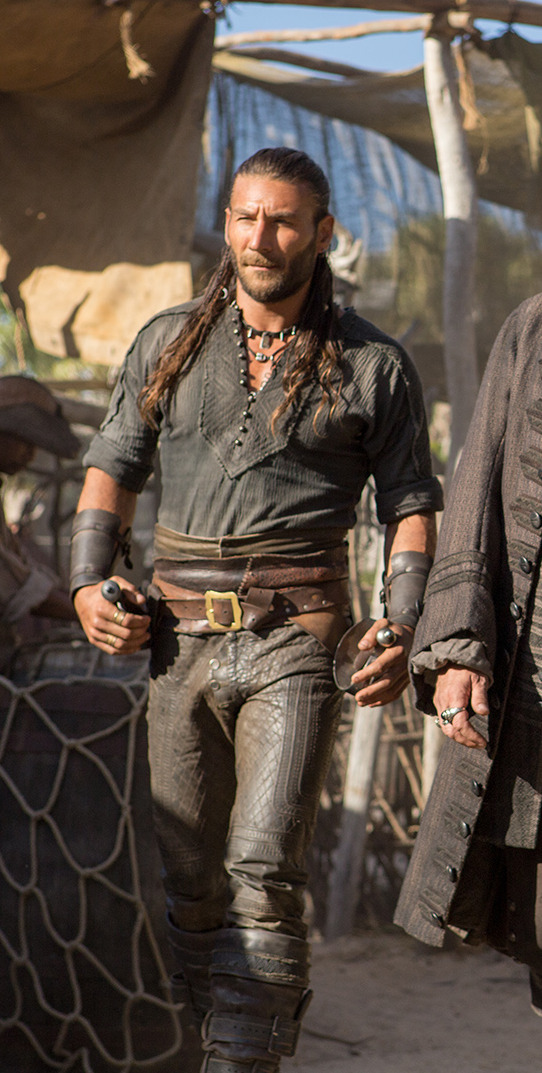
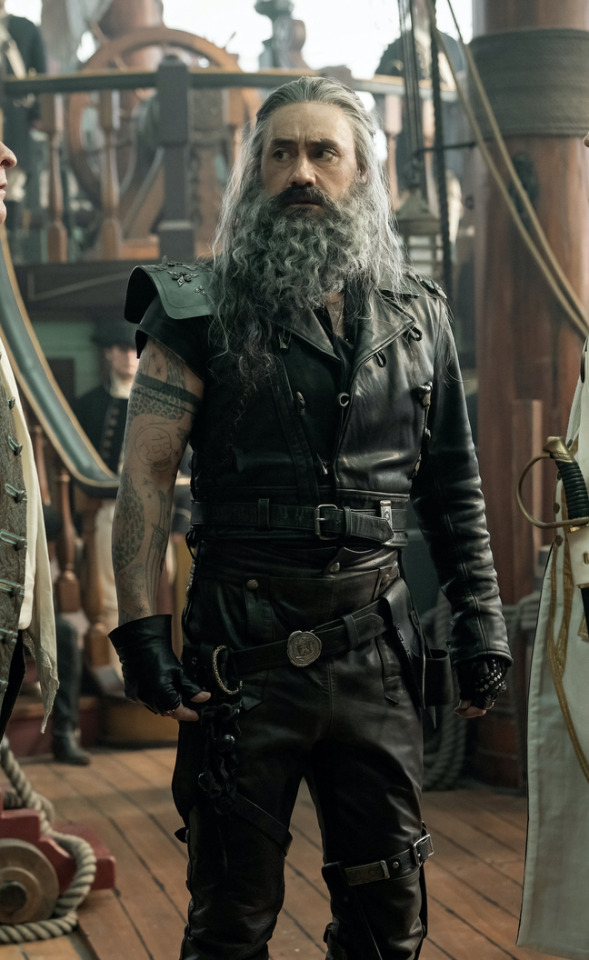
Here's the thing. Leather pants in period dramas isn't new. You've got your Vikings, Tudors, Outlander, Pirates of the Caribbean, Once Upon a Time, Will, The Musketeers, even Shakespeare in Love - they love to shove people in leather and call it a day. But where does this come from?

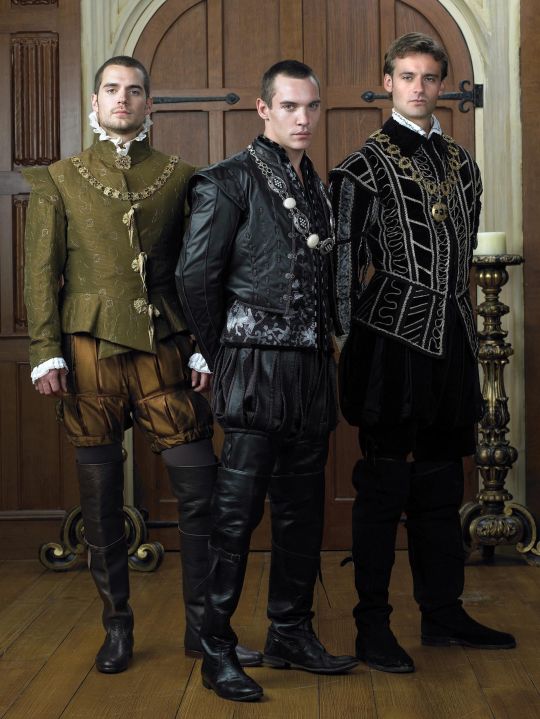
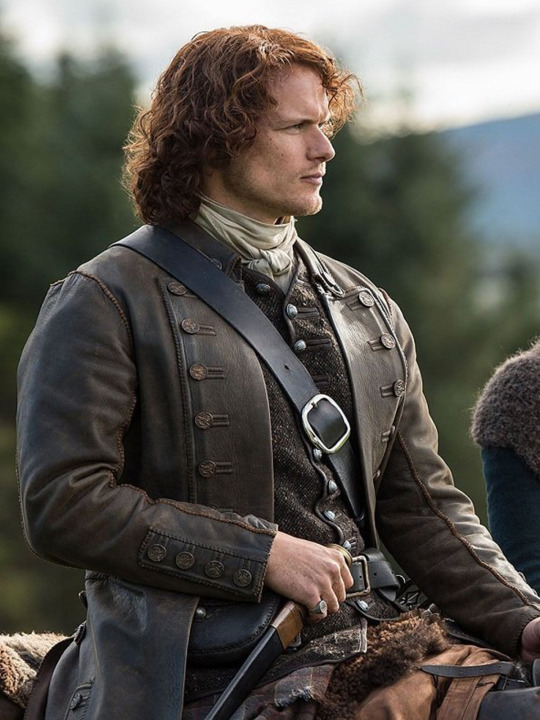

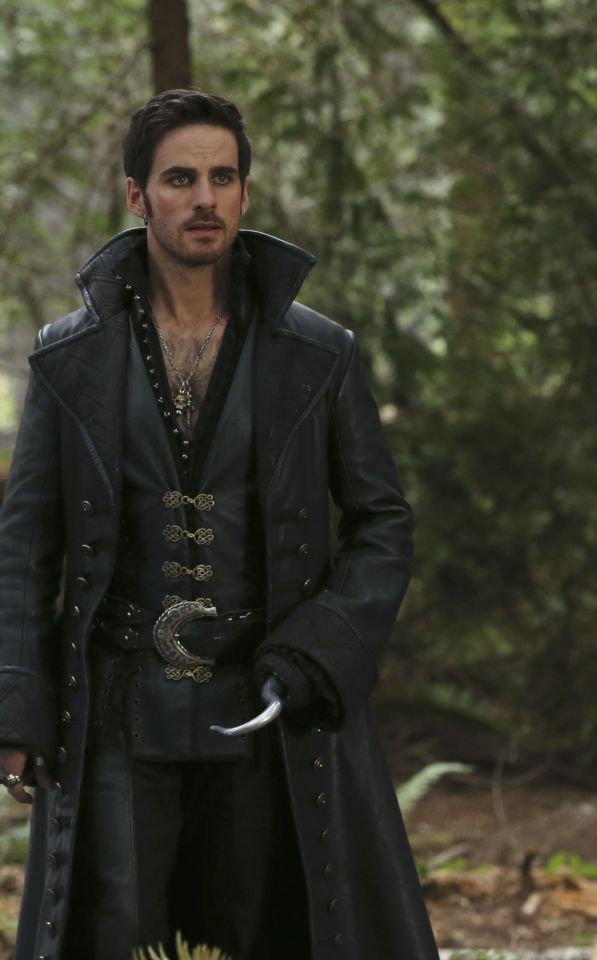
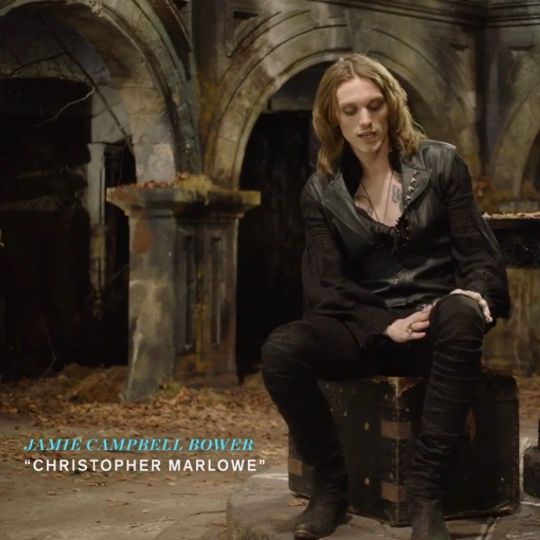
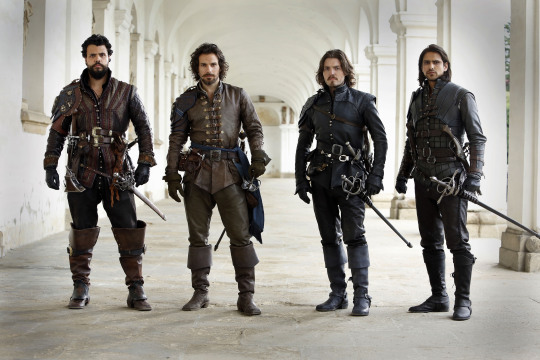

Obviously we have the modern connotations. Modern leather clothes developed in a few subcultures: cowboys drew on Native American clothing. (Allegedly. This is a little beyond my purview, I haven't seen any solid evidence, and it sounds like the kind of fact that people repeat a lot but is based on an assumption. I wouldn't know, though.) Leather was used in some WWI and II uniforms.
But the big boom came in the mid-C20th in motorcycle, punk/goth, and gay subcultures, all intertwined with each other and the above. Motorcyclists wear leather as practical protective gear, and it gets picked up by rock and punk artists as a symbol of counterculture, and transferred to movie designs. It gets wrapped up in gay and kink communities, with even more countercultural and taboo meanings. By the late C20th, leather has entered mainstream fashion, but it still carries those references to goths, punks, BDSM, and motorbike gangs, to James Dean, Marlon Brando, and Mick Jagger. This is whence we get our Spikes and Dave Listers in 1980s/90s media, bad boys and working-class punks.


And some of the above "historical" design choices clearly build on these meanings. William Shakespeare is dressed in a black leather doublet to evoke the swaggering bad boy artist heartthrob, probably down on his luck. So is Kit Marlowe.
But the associations get a little fuzzier after that. Hook, with his eyeliner and jewellery, sure. King Henry, yeah, I see it. It's hideously ahistorical, but sure. But what about Jamie and Will and Ragnar, in their browns and shabby, battle-ready chic? Well, here we get the other strain of Bad Period Drama Leather.
See, designers like to point to history, but it's just not true. Leather armour, especially in the western/European world, is very, very rare, and not just because it decays faster than metal. (Yes, even in ancient Greece/Rome, despite many articles claiming that as the start of the leather armour trend!) It simply wasn't used a lot, because it's frankly useless at defending the body compared to metal. Leather was used as a backing for some splint armour pieces, and for belts, sheathes, and buckles, but it simply wasn't worn like the costumes above. It's heavy, uncomfortable, and hard to repair - it's simply not practical for a garment when you have perfectly comfortable, insulating, and widely available linen, wool, and cotton!
As far as I can see, the real influence on leather in period dramas is fantasy. Fantasy media has proliferated the idea of leather armour as the lightweight choice for rangers, elves, and rogues, a natural, quiet, flexible material, less flashy or restrictive than metal. And it is cheaper for a costume department to make, and easier for an actor to wear on set. It's in Dungeons and Dragons and Lord of the Rings, King Arthur, Runescape, and World of Warcraft.

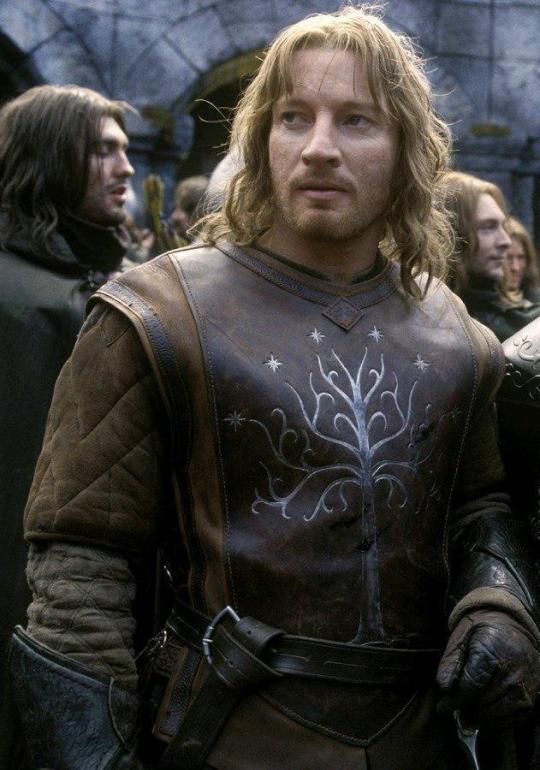
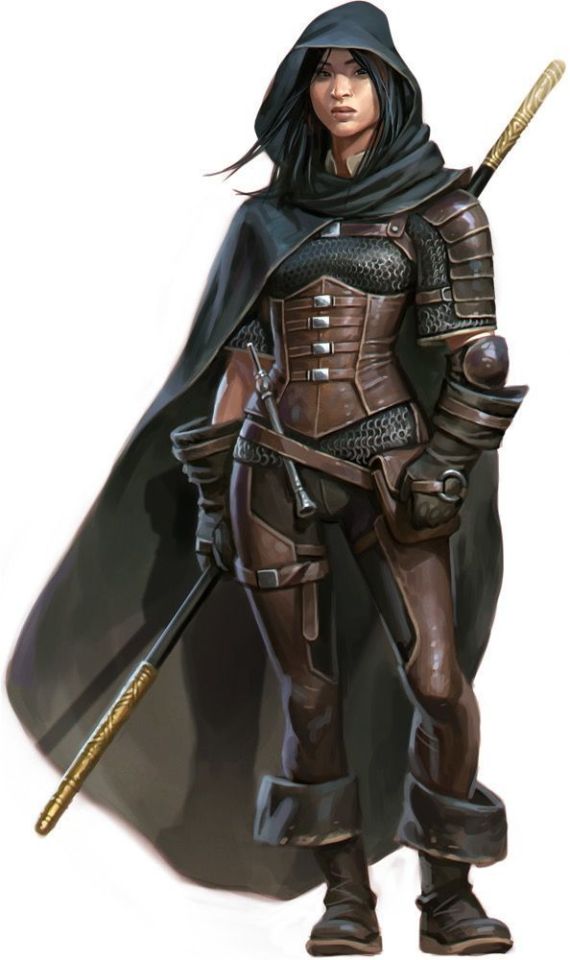
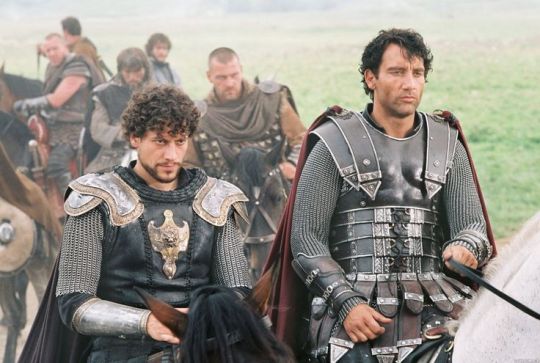

And I think this is how we get to characters like Ragnar and Vane. This idea of leather as practical gear and light armour, it's fantasy, but it has this lineage, behind which sits cowboy chaps and bomber/flight jackets. It's usually brown compared to the punk bad boy's black, less shiny, and more often piecemeal or decorated. In fact, there's a great distinction between the two Period Leather Modes within the same piece of media: Robin Hood (2006)! Compare the brooding, fascist-coded villain Guy of Gisborne with the shabby, bow-wielding, forest-dwelling Robin:

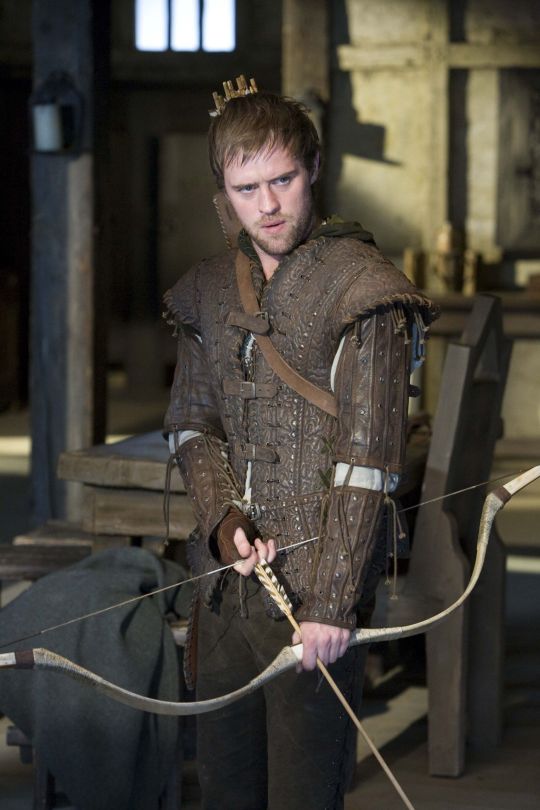
So, back to the original question: What's the difference between Charles Vane in Black Sails, and Edward Teach in Our Flag Means Death?
Simply put, it's intention. There is nothing intentional about Vane's leather in Black Sails. It's not the only leather in the show, and it only says what all shabby period leather says, relying on the same tropes as fantasy armour: he's a bad boy and a fighter in workaday leather, poor, flexible, and practical. None of these connotations are based in reality or history, and they've been done countless times before. It's boring design, neither historically accurate nor particularly creative, but much the same as all the other shabby chic fighters on our screens. He has a broad lineage in Lord of the Rings and Pirates of the Caribbean and such, but that's it.
In Our Flag, however, the lineage is much, much more intentional. Ed is a direct homage to Mad Max, the costuming in which is both practical (Max is an ex-cop and road warrior), and draws on punk and kink designs to evoke a counterculture gone mad to the point of social breakdown, exploiting the thrill of the taboo to frighten and titillate the audience.
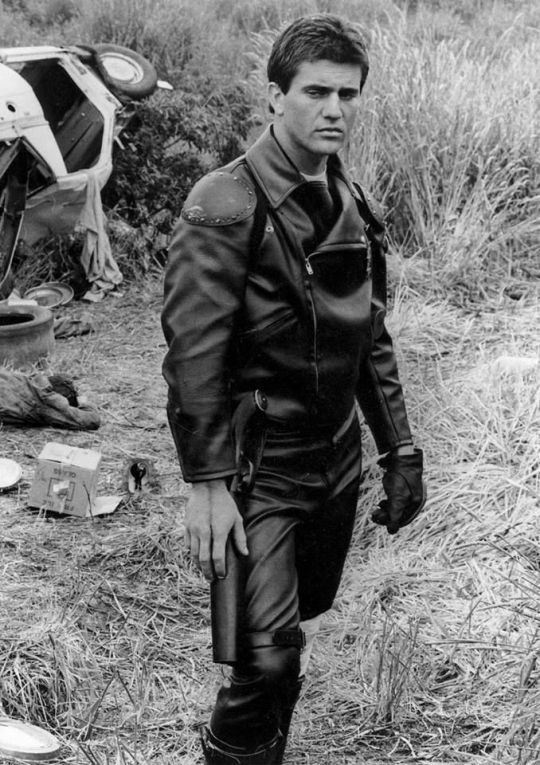
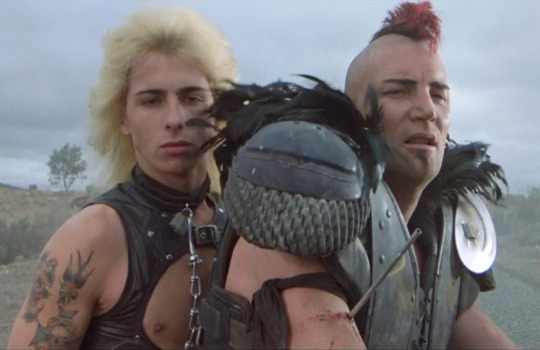
In particular, Ed is styled after Max in the second movie, having lost his family, been badly injured, and watched the world turn into an apocalypse. He's a broken man, withdrawn, violent, and deliberately cutting himself off from others to avoid getting hurt again. The plot of Mad Max 2 is him learning to open up and help others, making himself vulnerable to more loss, but more human in the process.

This ties directly into the themes of Our Flag - it's a deliberate intertext. Ed's emotional journey is also one from isolation and pain to vulnerability, community, and love. Mad Max (intentionally and unintentionally) explores themes of masculinity, violence, and power, while Max has become simplified in the popular imagination as a stoic, badass action hero rather than the more complex character he is, struggling with loss and humanity. Similarly, Our Flag explores masculinity, both textually (Stede is trying to build a less abusive pirate culture) and metatextually (the show champions complex, banal, and tender masculinities, especially when we're used to only seeing pirates in either gritty action movies or childish comedies).
Our Flag also draws on the specific countercultures of motorcycles, rockers, and gay/BDSM culture in its design and themes. Naturally, in such a queer show, one can't help but make the connection between leather pirates and leather daddies, and the design certainly nods at this, with its vests and studs. I always think about this guy, with his flat cap so reminiscient of gay leather fashions.

More overtly, though, Blackbeard and his crew are styled as both violent gangsters and countercultural rockstars. They rove the seas like a bikie gang, free and violent, and are seen as icons, bad boys and celebrities. Other pirates revere Blackbeard and wish they could be on his crew, while civilians are awed by his reputation, desperate for juicy, gory details.
This isn't all of why I like the costuming in Our Flag Means Death (especially season 1). Stede's outfits are by no means accurate, but they're a lot more accurate than most pirate media, and they're bright and colourful, with accurate and delightful silks, lace, velvets, and brocades, and lovely, puffy skirts on his jackets. Many of the Revenge crew wear recognisable sailor's trousers, and practical but bright, varied gear that easily conveys personality and flair. There is a surprising dedication to little details, like changing Ed's trousers to fall-fronts for a historical feel, Izzy's puffy sleeves, the handmade fringe on Lucius's red jacket, or the increasing absurdity of navy uniform cuffs between Nigel and Chauncey.
A really big one is the fact that they don't shy away from historical footwear! In almost every example above, we see the period drama's obsession with putting men in skinny jeans and bucket-top boots, but not only does Stede wear his little red-heeled shoes with stockings, but most of his crew, and the ordinary people of Barbados, wear low boots or pumps, and even rough, masculine characters like Pete wear knee breeches and bright colours. It's inaccurate, but at least it's a new kind of inaccuracy, that builds much more on actual historical fashions, and eschews the shortcuts of other, grittier period dramas in favour of colour and personality.
But also. At least it fucking says something with its leather.
#everyone say 'thank you togas' for not including a long tangent about evil rimmer in red dwarf 5x05#Our Flag Means Death#Togas does meta#and yes these principles DO fall apart slightly in s2 and i DON'T like those costumes as much#don't get me wrong they're fun and gorgeous - but generally a bit less deep and more inaccurate. so. :(#I'm not sure this really says anything new about Our Flag but I just needed to get my thoughts out#i hate hate hate Gritty Period Drama costumes they're so boring and so ugly and so wrong#god bless OFMD for using more than 3 muted colours and actually putting men in heels (and not as a shorthand for rich/foppish villainy) <3#looking at that Tudors still is insane like they really will go to any lengths to not make men feel like they've got bare legs XD#image descriptions in alt text#and yes i DID just sink about two hours into those so you'd better appreciate them
1K notes
·
View notes
Text
Aziraphale is a guardian.
We left him at the end of s1 with the knowledge that apocalypse was still coming. He'd saved the world for that day, but Heaven was still bent on destroying it. The ones with the power to burn everything were still inescapably loveless. It really looked like he and Crowley alone of all the Earth-walking beings would fight for the world.
And he loves the world so much. The opening scenes of him in the record shop, buying his Shostakovich 78s? The warmth toward Maggie and her music and her heart? The generosity, and the delight in the shared understanding, and the pleasure in the discovery that he could make her life better? That he could spare her pain, give her a little more time with her joys? He knows how fragile those are.
He wants to give that to the whole world.
He wants to believe he can lift the doom hanging over them all, banish it permanently. He is desperate to believe it. Even if he wasn't longing so fervently to be seen, approved, affirmed by God's word (I was so undone by his jealousy as he watched Job speak to her) -- even without that I can't imagine him not wavering at Heaven's offer, faced with the chance that he could use all Heaven's might to guard the world again and get it right this time.
And then he's offered that power with apparent warmth, and feigned approval, and the shameless claim that at last they understand. They hear what he's been trying desperately to tell them as long as he's lived in the world. They're telling him that he's finally made his point -- that they are proud he's tried so hard for so long.
So -- the ending is shattering. It is maddening. It's utterly unfair on Crowley. And I didn't see it coming, and yet.
Aziraphale is a guardian. He really will have to see for himself that power won't love what's good; there is no way to make the world safe forever.
#crowley already knows it#has known it for ages#has fed off aziraphale's hopefulness and tenderness and love for as long#to keep himself out of despair#if aziraphale can make it through whatever disillusionment comes next with his courage and his tenderness intact#it will be so much more sure#he'll have so much more to give crowley#but even if it shatters i know crowley will hold it all to give back to him#they keep each other soft in the end#jkafdkjlfdsakl;fd;lak;dalfkjj; i'm helpless to the radiance of their goodness to each other#aaaanyway them's my first thoughts#good omens 2#good omens#go s2#good omens s2
3K notes
·
View notes
Text
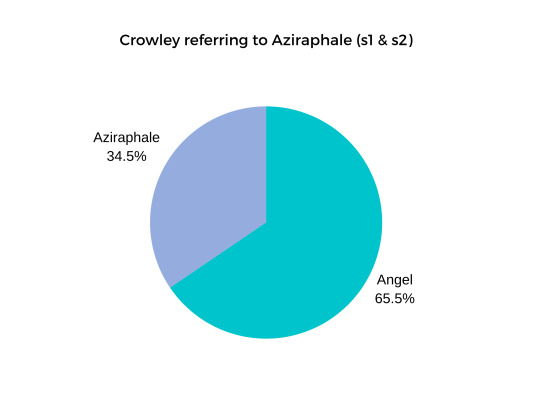






#heres some data from my rewatch of good omens#i definitely had to draw some lines between which instances I counted and which I didn't and it was harder than I thought it would be to do#Anyways the lack of “Aziraphale” references in s2 compared to “Angel” is crazy!#lmk if you disagree or have suggestions#Crowley invented using “Angel” as a term of endearment#remember this is not everytime they say eachother's names#its every time they say eachother's names when talking to eachother... not to other people#pet names#good omens#data#numbers#aziraphale#crowley#ineffable husbands#pie charts#aziracrow
1K notes
·
View notes
Text

I feel like we don’t talk about this scene enough. It’s the implication that Mobius knows every terrible thing Loki has ever done and has still never seen him as a villain because of it. It’s Loki intimidating Brad by saying that Mobius—the person who understands him best—would agree that Loki is capable of getting what he needs from Brad. It’s Loki admitting that Mobius is the one who knows him better than anyone else ever has. It’s the casual intimacy of the statement, just 3 ostensibly unimportant words thrown on at the end of a sentence that ultimately reveals how familiar and close they really are to each another.
#idk what is it about this scene#but it makes me go absolutely feral every time#Lokius#loki#mobius#mobius m mobius#breaking Brad#loki 2x02#loki s2#loki season two#loki series#loki season 2#loki tv#thoughts-theories#my HEART#Loki-us blog#im screaming
1K notes
·
View notes
Text
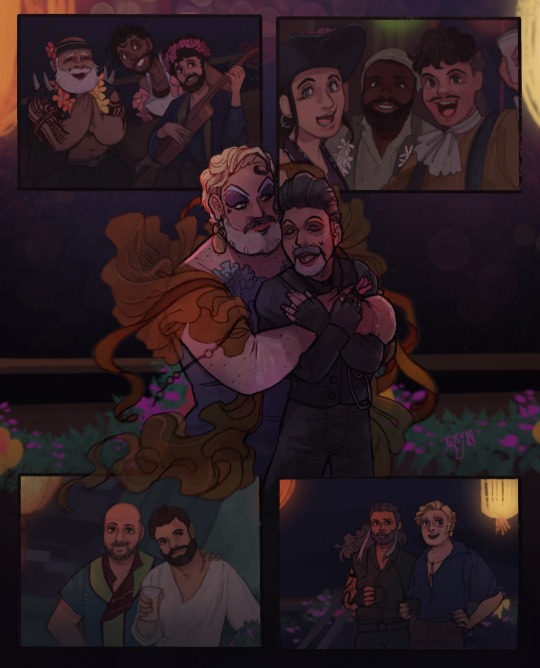
Calypso knows how to throw a party
#ofmd#ofmd s2#John feeney#izzy hands#just the thought of tagging the rest of the crew makes me tired sorry-#anyway take this mess of values and colors i dont want to work on it anymore#maybe i will try somethign related to this ep again in a while#should restrict my color palette then#i threw so many gradients and overlay layers over this you have no idea lol
2K notes
·
View notes
Photo
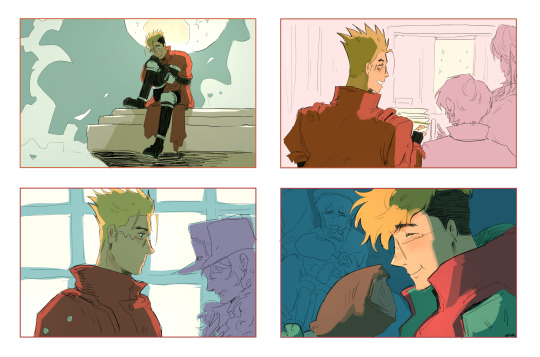


i’ll find you again in every universe. let us be a little more honest, let us have a little more time.
#vashwood#vash the stampede#nicholas d wolfwood#trigun#despite it all though badlands rumble is like. the only universe where we get wolfwood thinking vash died first... and i think that means a#lot to their relationship and how it may bloom if there was more to badlands rumble considering vash literally saw wolfwood carrying a piece#of vash after his supposed death. u know! despite the short time they were together vash still meant so much to wolfwood that he couldn't#just move on or forget him in anyway. needed to keep a piece of him for himself and the rest of his days. but ofc vash lives and wolfwood#was like ill beat ur fucking ass into tomorrow. there's just so much honesty in vash being able to see that gesture bc he wouldnt know#otherwise just how much he might mean to him. ANYWAY. trimax with with the eternal pining featuring the two chapters where imo#where the both of them really fell for each other... i wrote my thoughts about this on another comic i did before#but vash solidifying his feelings during the hospital arc -- ww solidifies his when he realizes his allegiances are permanently with vash#98 my lovelies but also to me they are so one-sided bc ww pined like no tomorrow and vash only realizes after ep 23?24? his heart did tickle#whenever ww complimented his smile though#and tristamp vw my beloveds. it really just feels like they get the chance to be closer and closer and more honest with each other#with every version that comes about. in trimax they knew how little time they had but struggled so desperately to get closer. in 98 ww felt#more willing to forsake for vash. in badlands rumble theyre Angry but as mentioned earlier ^ more blatant truth... due to circumstances#mainly but has the chance to lead to discussions and tristamp literally. first day of knowing each other ww saves vash - 2 days later vash#saves ww like. Man. AND NOW THEY MAY POTENTIALLY GET EVEN CLOSER!!!! with s2....#ruporas art
5K notes
·
View notes
Text

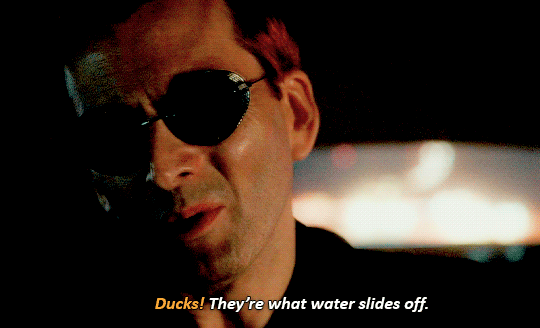
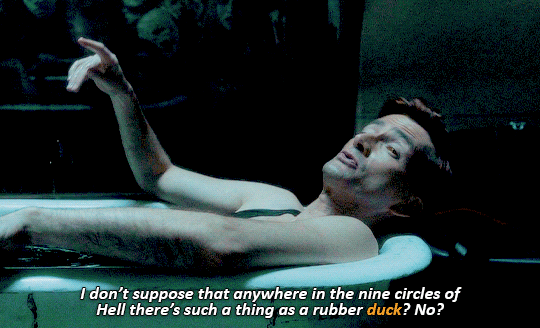


𝗔𝗭𝗜𝗥𝗔𝗣𝗛𝗔𝗟𝗘 & 𝗖𝗥𝗢𝗪𝗟𝗘𝗬 + ducks 🦆
#in my head its canon that aziraphale thought crowley was talking about rubber ducks the whole time#and crowley thought aziraphale liked them so they gave eachother those angel/devil rubber ducks once#good omens#goodomensedit#good omens s2#neil gaiman#michael sheen#david tennant#aziraphale#crowley#mine#ineffable and#ineffable husbands#aziraphale x crowley#crowley x aziraphale#*
2K notes
·
View notes
Text

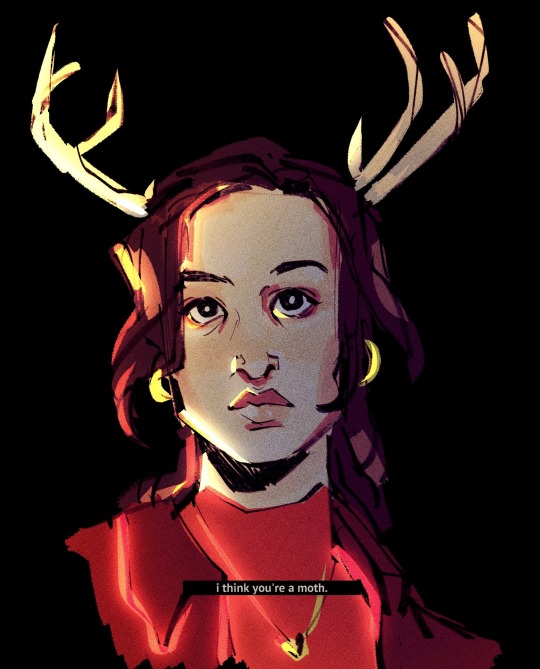
jackieshauna saltburn. is this anything
#yellowjackets#my art#jackie taylor#shauna shipman#jackieshauna#shaunajackie#jackie x shauna#wlw#saltburn#artists on tumblr#yellowjackets fanart#idk. i don’t think they’re very very similar but i thought this would be fun to draw!#i started watching yellowjackets and i love it lol#no spoilers tho pls i’m only halfway through s2
785 notes
·
View notes
Text
DRAGONS RISING S2 SPOILERS

guys im going insane
#ninjago#ninjago thoughts#ninjago jay#my art#ninjago fanart#jay walker#ninjago lloyd#lloyd garmadon#dragons rising#ninjago dragons rising#dragons rising spoilers#ninjago dragons rising spoilers#dragons rising s2#dragons rising season 2#spoilers
575 notes
·
View notes
Text
izzy refusing to shoot ed is izzy finally accepting him. ed thinks the one person he can trust to follow his orders, blackbeards orders, is izzy. so when ed puts the gun in izzys hand, izzy has a choice to make between blackbeard and ed, and he chooses ed. he chooses ed by refusing to kill him because he loves him, something ed refuses to accept.
and then izzy metaphorically kills the old version of himself that would have pulled the trigger. that scene is a rebirth for izzy.
#finally some of my thoughts are becoming coherent i think#so much to say SO MUCH TO SAY#their dynamic is like crack to me#izzy hands#edward teach#blackbeard#ofmd s2 spoilers#ofmd#1k
1K notes
·
View notes